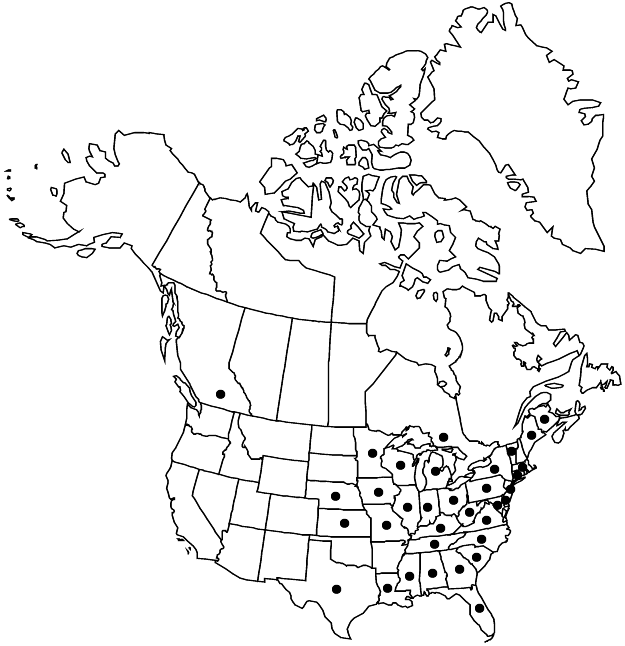Persicaria longiseta
Rep. Inst. Sci. Res. Manchoukuo 1: 322. 1937.
Plants annual, 3–8 dm; roots also often arising from proximal nodes; rhizomes and stolons absent. Stems decumbent to ascending, branched, without noticeable ribs, glabrous. Leaves: ocrea hyaline to brownish, cylindric, 5–12 mm, chartaceous, base sometimes inflated, margins truncate, ciliate with bristles 4–12 mm, surface glabrous or strigose, not glandular-punctate; petiole 0.1–0.3(–0.6) cm, glabrous, leaves sometimes sessile; blade without dark triangular or lunate blotch adaxially, ovate-lanceolate to linear-lanceolate, 2–8 × 1–3 cm, base tapering to cuneate, margins antrorsely strigose, apex acute to acuminate, faces glabrous or sparingly strigose along veins abaxially, glabrous or strigose along midvein and margins adaxially, not glandular-punctate. Inflorescences terminal, sometimes also axillary, erect, uninterrupted, 10–40(–80) × 3–7 mm; peduncle 10–50 mm, glabrous; ocreolae overlapping, margins ciliate with bristles (0.5–)1–4(–6) mm. Pedicels ascending, 1–2 mm. Flowers 1–5 per ocreate fascicle, homostylous; perianth pinkish green proximally, roseate distally, glabrous, not glandular-punctate, scarcely accrescent; tepals 5, connate ca. 1/3 their length, obovate, 2.2–2.8 mm, veins not prominent, not anchor-shaped, margins entire, apex obtuse to rounded; stamens 5, included; anthers yellow, elliptic to ovate; styles 3, connate proximally. Achenes included, dark brown to black, 3-gonous, 1.6–2.3 × 1.1–1.6 mm, shiny, smooth.
Phenology: Flowering May–Oct.
Habitat: Floodplain forests and woodlands, shorelines of ponds, moist roadsides, waste places
Elevation: 0-300 m
Distribution

Introduced; B.C., N.B., Ont., Ala., Conn., Del., Fla., Ga., Ill., Ind., Iowa, Kans., Ky., La., Maine, Md., Mass., Mich., Minn., Miss., Mo., Nebr., N.J., N.Y., N.C., Ohio, Pa., S.C., Tenn., Tex., Vt., Va., W.Va., Wis., e Asia, introduced also in Europe.
Discussion
Persicaria longiseta is morphologically similar to another Asian species, P. posumbu (Buchanan-Hamilton ex D. Don) H. Gross (= P. caespitosa). Its spread in the United States since its introduction near Philadelphia in 1910 was summarized by A. K. Paterson (2000).
Selected References
None.